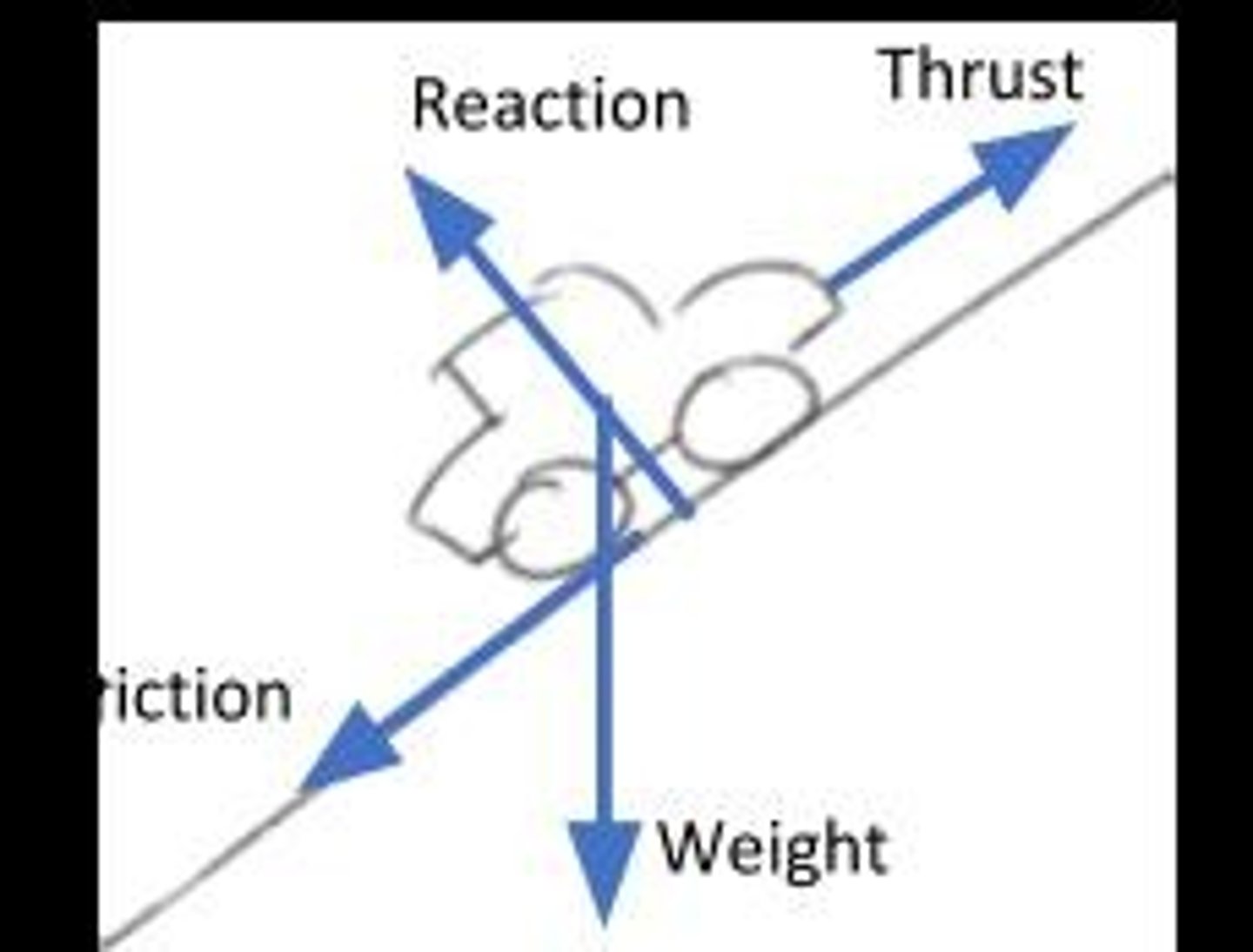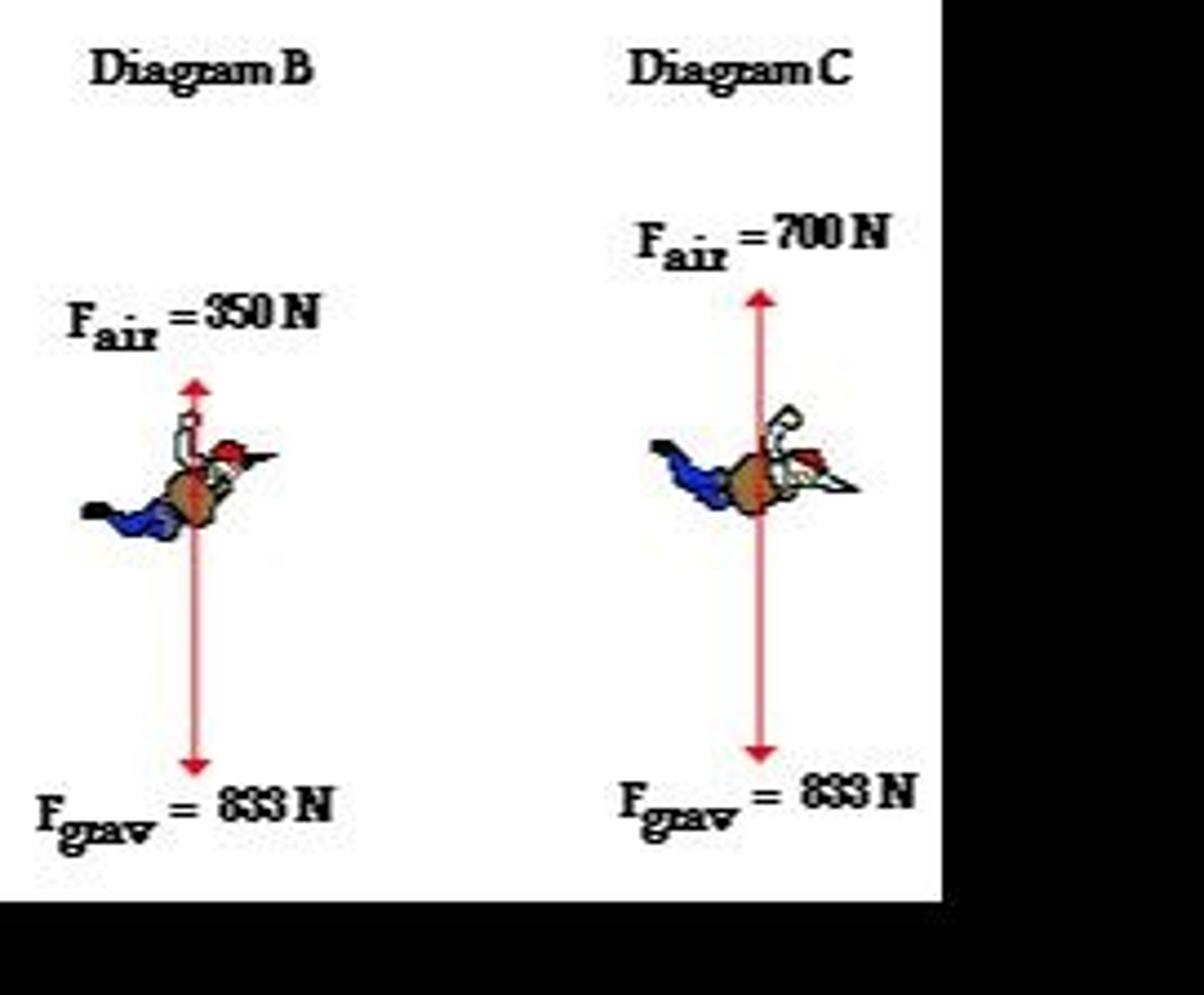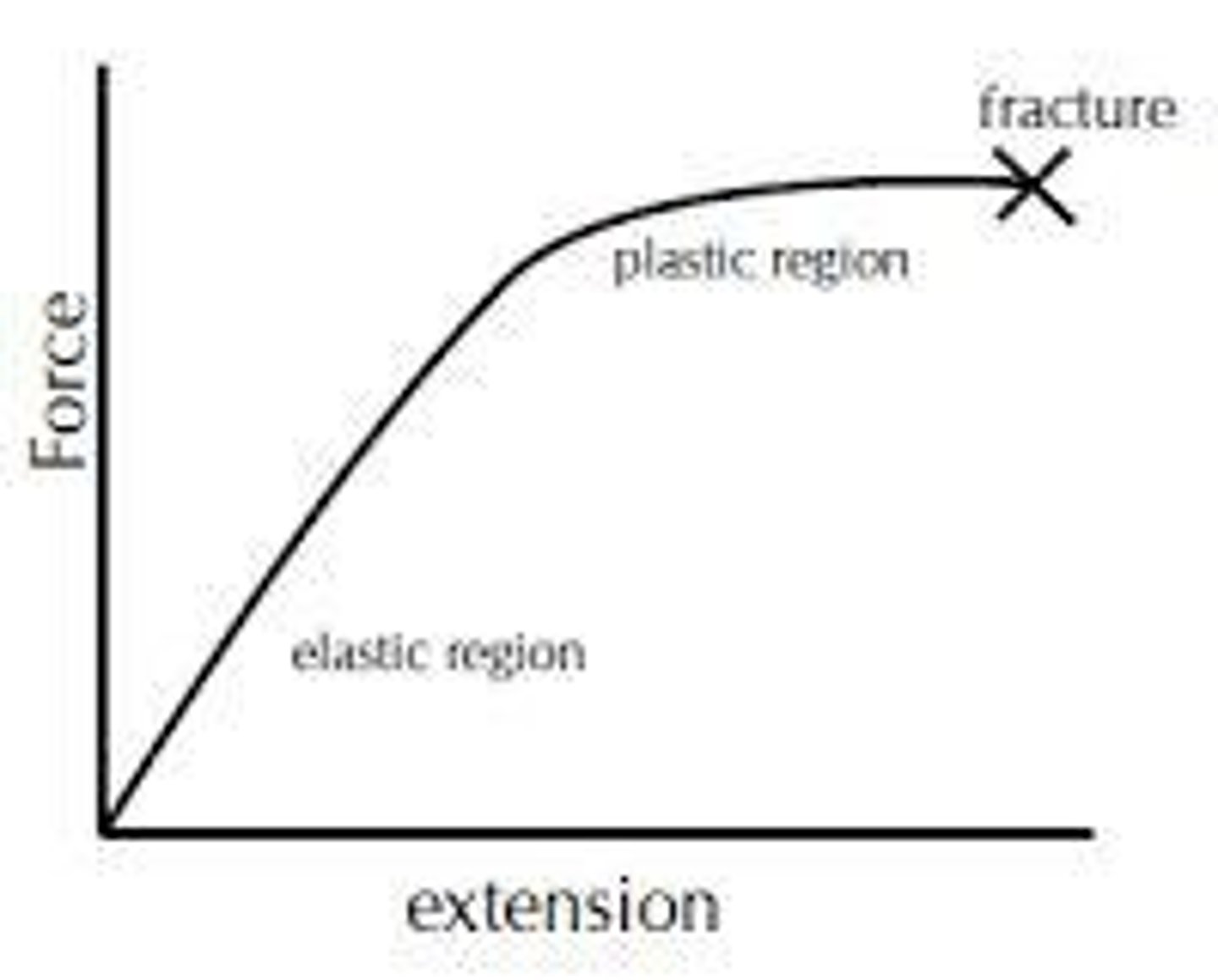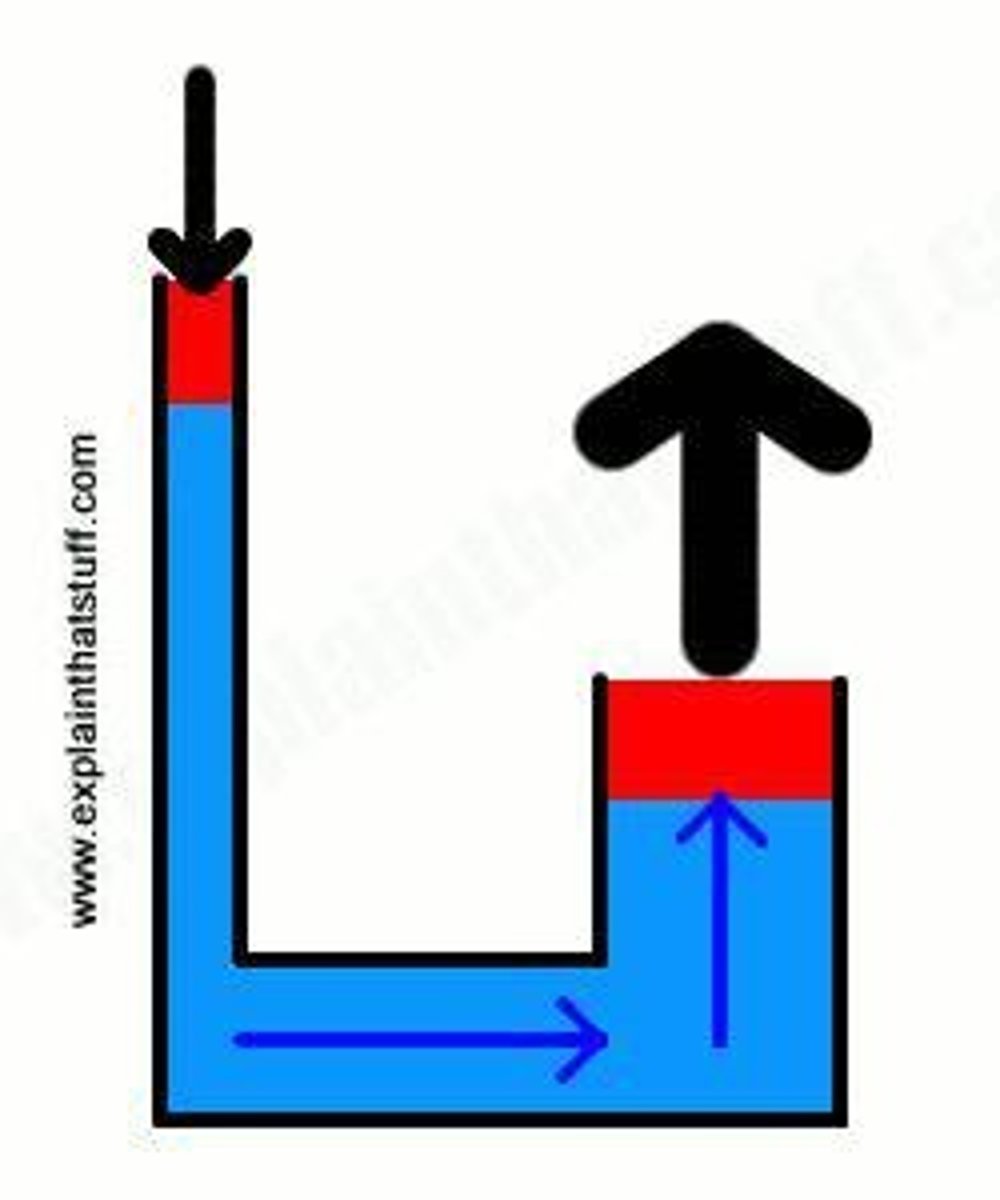P2 Forces and Motion Concepts
1/60
There's no tags or description
Looks like no tags are added yet.
Name | Mastery | Learn | Test | Matching | Spaced |
|---|
No study sessions yet.
61 Terms
Distance
Can be measured in mm, cm, m and km.
Time
Is measured in ms, s, mins and hours.
Speed
Calculated using the formula speed = distance / time.
Vector
Has magnitude and direction.
Scalar
Has just magnitude and generally cannot be negative.
Velocity
A vector that gives speed in a given direction.
Distance-Time Graphs
Typically have time on the x-axis and distance on the y-axis; the gradient shows velocity.
Gradient
The steeper the gradient, the faster the speed.
Negative Gradient
Indicates the moving object is returning back to the starting point.
Horizontal Line
Indicates the object is stationary.
Curved Line
Indicates the velocity is changing and the object is accelerating or decelerating.
Velocity-Time Graphs
Typically have time on the x-axis and velocity on the y-axis; the gradient shows acceleration.
Average Speed
Calculated using the formula average speed = total distance / total time.
Electrostatic Interaction
Occurs between charged particles, where they experience a force of attraction or repulsion.
Gravitational Attraction
Occurs between particles with mass.
Contact Forces
Experienced in the opposite direction to contact, such as friction.
Free Body Force Diagrams
Show the direction of forces that are present on an object in a situation.

Reaction Force
Always acts normal (perpendicular) to the line of contact, from the point of contact.
Friction
Acts in the opposite direction to movement, along the line of contact.
Weight
Always acts vertically downwards, acting from the object's centre of mass.
Scale Drawings
The length of each arrow represents its size in relation to the other forces acting on the object.
Resultant Force
The larger arrow shows the resultant force.
Equilibrium
Occurs when forces cancel out so the object travels at a constant velocity.
Newton's First Law
An object has a constant velocity unless acted on by a resultant force. If a resultant force acts, the object will accelerate.
Acceleration
Change in velocity over time, affecting the direction and/or speed of the object.
Terminal Velocity
The speed at which the thrust is balanced by drag and friction, resulting in no resultant force and no further acceleration.

Newton's Second Law
The acceleration or deceleration experienced depends on the direction and magnitude of the resultant force.
Force Equation
F = m × a, where F is force, m is mass, and a is acceleration.
Inertia
The measure of how difficult it is to change the velocity of an object depending on its mass.
Momentum
The product of an object's mass and velocity, defined as p = m × v (units Ns or kg·m/s).
Elastic Collision
In an elastic collision, both momentum and kinetic energy are conserved.
Work Done
Work is done when energy is transferred from the object doing the work to another form, calculated as W = F × d.
Distance in Work Done
Distance is the distance moved along the line of action of the force.
Work Done Measurement
Work done is measured in Joules.
Deformation
Changes in shape caused by stretching forces, also called distortion.
Elastic Deformation
The object returns to its original shape when the load has been removed.
Plastic Deformation
The object does not return to its original shape when the load has been removed.
Example of Work Done
If a book is lifted 1m in the air, work is done against gravity, transferring energy from muscles to the book.
Example of Reaction Force
The weight of a book on a table is equal to the reaction support force on the book by the table.
Example of Rocket Lift
The force of the gases being ejected from the rocket is equal to the force that lifts the rocket from the surface.
Single Force Application
If a single force is applied to an object, it will just move in that direction.
Multiple Force Application
To stretch, bend or compress an object, more than one force has to be applied.
Stretching Object
If pulled in opposite directions on either side of the object, the object will stretch.
Fixed Point Force
If fixed at one point and pulled from another point, a force is still being applied by the fixed point.
Gun and Bullet Example
A stationary gun of 10kg loaded with a bullet is fired, demonstrating momentum conservation.
Hooke's Law
F = kx, where F is the force applied to the spring (N), k is the spring constant (N m−1), and x is the extension (m).
Elastic Limit
The point at which the trend stops being linear on a Force-Extension graph, after which it does not obey Hooke's Law.

Non-Linear Lines
Lines that show non-elastic behaviour and do not obey Hooke's Law.
Brittle Material
A material that is linear with no non-linear end section and will snap instead of stretching after the elastic limit.
Work Done on a Spring
Calculated as the area under the force-extension graph: W = (1/2)kx^2.
Gravitational Field Strength
The strength of the gravitational field, affecting the weight of an object based on its mass.
Acceleration in Free Fall
Due to gravity, it is the same as g (9.81 m s−2).
Gravitational Potential Energy
Calculated as PE = mass × field strength × height.
Moment of a Force
Calculated as M = force × perpendicular distance from the pivot.
Gears
Can change speed, force, or direction by rotation.
Lower Gear
Has fewer teeth and will turn faster as less force is applied in the opposing direction.
Higher Gear
Has more teeth and will turn slower as a greater force is applied in the opposing direction.
Pressure in Fluids
Causes a net force at right angles to any surface.
Pressure Formula
Pressure (p) = force / area (to the normal).
Bed of Nails vs. Single Nail
On a bed of nails, the force is spread out over a larger area, reducing pressure; on a single nail, the area is small, increasing pressure.
Hydraulic Brakes
A piston forced into a narrow cylinder connected to wider cylinders multiplies the force applied, creating greater braking force due to constant pressure in fluids.
